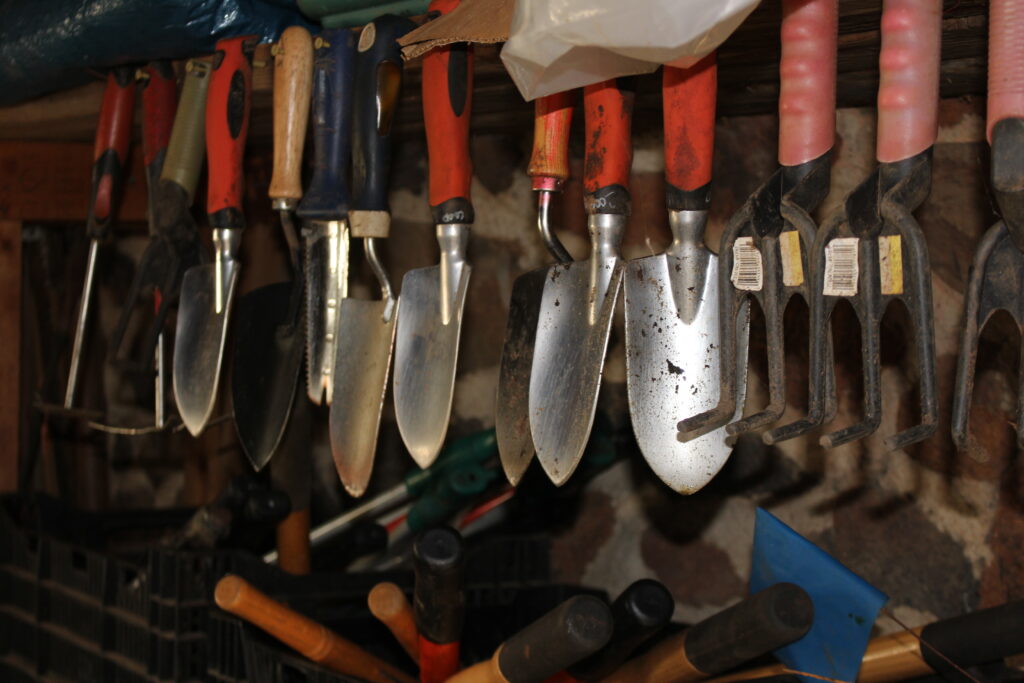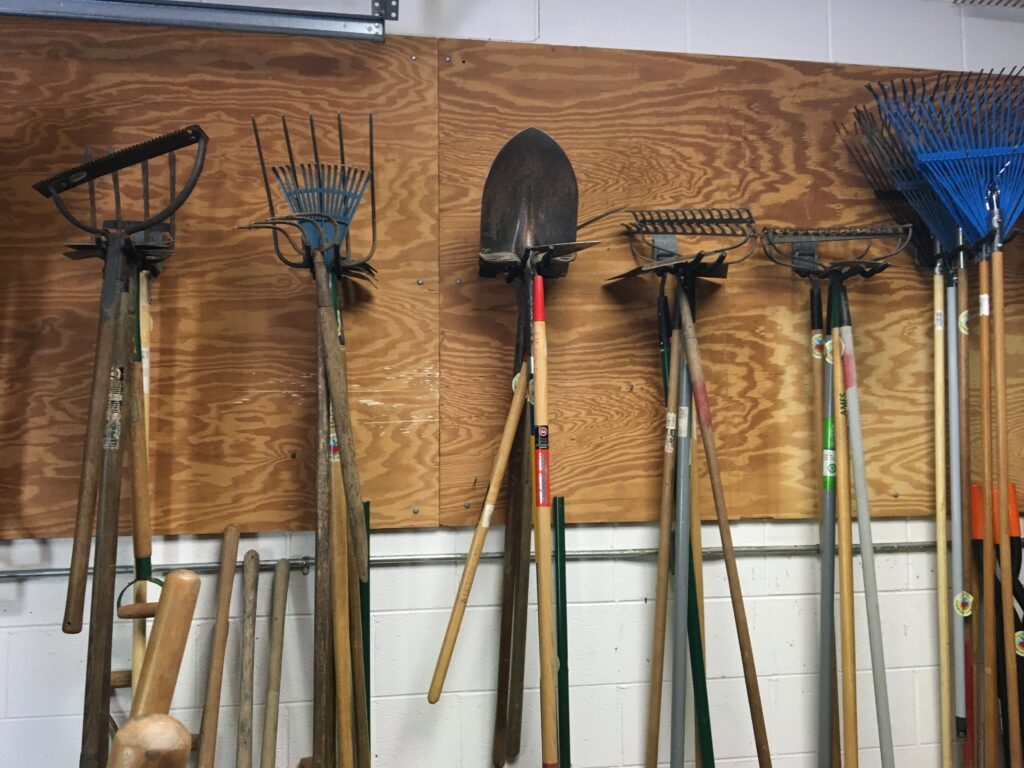Winter Is a Great Time for Garden Tool Care
go.ncsu.edu/readext?760180
en Español / em Português
El inglés es el idioma de control de esta página. En la medida en que haya algún conflicto entre la traducción al inglés y la traducción, el inglés prevalece.
Al hacer clic en el enlace de traducción se activa un servicio de traducción gratuito para convertir la página al español. Al igual que con cualquier traducción por Internet, la conversión no es sensible al contexto y puede que no traduzca el texto en su significado original. NC State Extension no garantiza la exactitud del texto traducido. Por favor, tenga en cuenta que algunas aplicaciones y/o servicios pueden no funcionar como se espera cuando se traducen.
Português
Inglês é o idioma de controle desta página. Na medida que haja algum conflito entre o texto original em Inglês e a tradução, o Inglês prevalece.
Ao clicar no link de tradução, um serviço gratuito de tradução será ativado para converter a página para o Português. Como em qualquer tradução pela internet, a conversão não é sensivel ao contexto e pode não ocorrer a tradução para o significado orginal. O serviço de Extensão da Carolina do Norte (NC State Extension) não garante a exatidão do texto traduzido. Por favor, observe que algumas funções ou serviços podem não funcionar como esperado após a tradução.
English
English is the controlling language of this page. To the extent there is any conflict between the English text and the translation, English controls.
Clicking on the translation link activates a free translation service to convert the page to Spanish. As with any Internet translation, the conversion is not context-sensitive and may not translate the text to its original meaning. NC State Extension does not guarantee the accuracy of the translated text. Please note that some applications and/or services may not function as expected when translated.
Collapse ▲Most gardeners have a favorite tool, it’s probably one that they reach for most frequently when out in the garden. Though garden tools get used a lot, they often get neglected while we are busy tending the plants during the growing season. Winter is a great season to dedicate some time to cleaning and caring for your tools.

Cleaning your tools is the first step in tool care. It is best to remove soil from your tools after each use. Water is an easy way to remove most of the dirt from shovels, spades, and other digging implements. A wire brush or a brush with stiff bristles is great for removing anything that is stuck on your tools. You may also want to use steel wool or sandpaper if your tools have developed rust. If you have a tool that is covered in sticky sap, try removing the sap with alcohol, mineral spirits, or foaming bathroom cleanser.
After you’ve cleaned your tools, it is time to disinfect them. Disinfecting tools helps prevent the spread of plant disease. Frequently used tools should be disinfected through the season, especially if you are using them in multiple locations or on many different plants. One of the easiest ways to clean your tools is by using a diluted bleach solution containing 9 parts of water to 1 part of bleach. However, do note that bleach can be corrosive. This article gives details on a variety of disinfectant options and may aid you in deciding what to use on your tools.
Whatever disinfectant you use, tools should be fully dry before you store them in order to prevent rust. Hanging tools so they are not in contact with the ground may also help prevent rust. Applying a light oil to your tools is another way to avoid rust. For larger tools such as shovels and spades, try filling a 5 gallon bucket with sand mixed with oil. Motor oil is a cheap option for this, but any light oil will help. Dip the clean tools into the bucket of sand and oil. For smaller tools, you can apply oil with a rag or use a spray such as WD-40.

When you are spending time cleaning your tools, pay attention to any wooden handles. Use sandpaper to smooth the handles. Applying oil, such as linseed or mineral oil, to tool handles is also beneficial.
Finally, consider sharpening tools such as spades, shovels, and pruners. If you do not feel confident in sharpening your own tools, many hardware stores will offer this service. Many tool manufacturers provide online resources to help you disassemble and sharpen your tools. If you are sharpening hand pruners, click here for a useful article and how-to video.
Taking the time to care for your garden tools will extend their life. When spring rolls around, you’ll be ready to get back in the garden and take care of all the plants there.




